If you are new to the Metaverse, you have been sleeping under a rock and need to get caught up on where the world — the entire world, not just the marketing world — is headed. If you have already heard about it, buckle up: the future is already here and you need to start planning for it now (read: yesterday).
Before we get into what the Metaverse means for the world of marketing and how it will change it, let us take a look at the origin and evolution of the concept.
Hello, New (Meta) World
The term “metaverse” is akin to the term “Internet” in many ways. It’s one of those tech buzzwords that’s here to stay — and that’s redefining the way people work. That’s why it’s also crucial from a marketing perspective to understand what changes the Metaverse will bring — just like when the Internet opened new doors for brand marketing and growth in the digital world.
The original notion of a Metaverse was first mentioned by Neal Stephenson in his 1992 novel Snow Crash. It then served as the basis for the Oasis in the novel Ready Player One by Ernest Cline.
Nearly three decades later, the concept of Metaverse resurfaced in an essay by venture capitalist Matthew Ball, in which he articulated a textbook definition and characteristics of the Metaverse. Key attributes included: it encompasses both the digital and real worlds, has a fully functioning, independent economy, and is defined by a concept called “interoperability” — meaning that all objects and avatars within the Metaverse can be transferred from one part of the Metaverse to another, regardless of whose jurisdiction they fall under.
Bringing all of the above together, the Metaverse is essentially what the internet will morph into as the world becomes more digital by the day. The word “metaverse” now describes a reality that transcends the physical and extends into the digital, with experiences and values that span two worlds simultaneously.
What does this mean for marketing? Well, it’s an opportunity and a challenge rolled into one: the Metaverse creates a whole new space for brands to build a strong presence and connect with consumers. But it’s also an uncharted territory that requires strategic thinking to ensure a smooth yet memorable entry into a whole new world that is consistent with (and complements well) your brand identity.
Why now?
For certain tech trends to take hold and upend the world as we know it, it takes the right combination of a strong concept, the right timing, and the right context. In the case of the Metaverse, all three factors came together to create a serendipitous environment where the idea could permeate people’s lives and even define the future.
One, there is the timing. The COVID-19 pandemic dramatically accelerated digital transformation around the world. Overnight, life via digital platforms became the new normal. Work became remote, online entertainment saw a significant spike, new platforms for communication, entertainment, education, and services were born — and the world was never the same.
People are looking to connect and entertain themselves since the pandemic
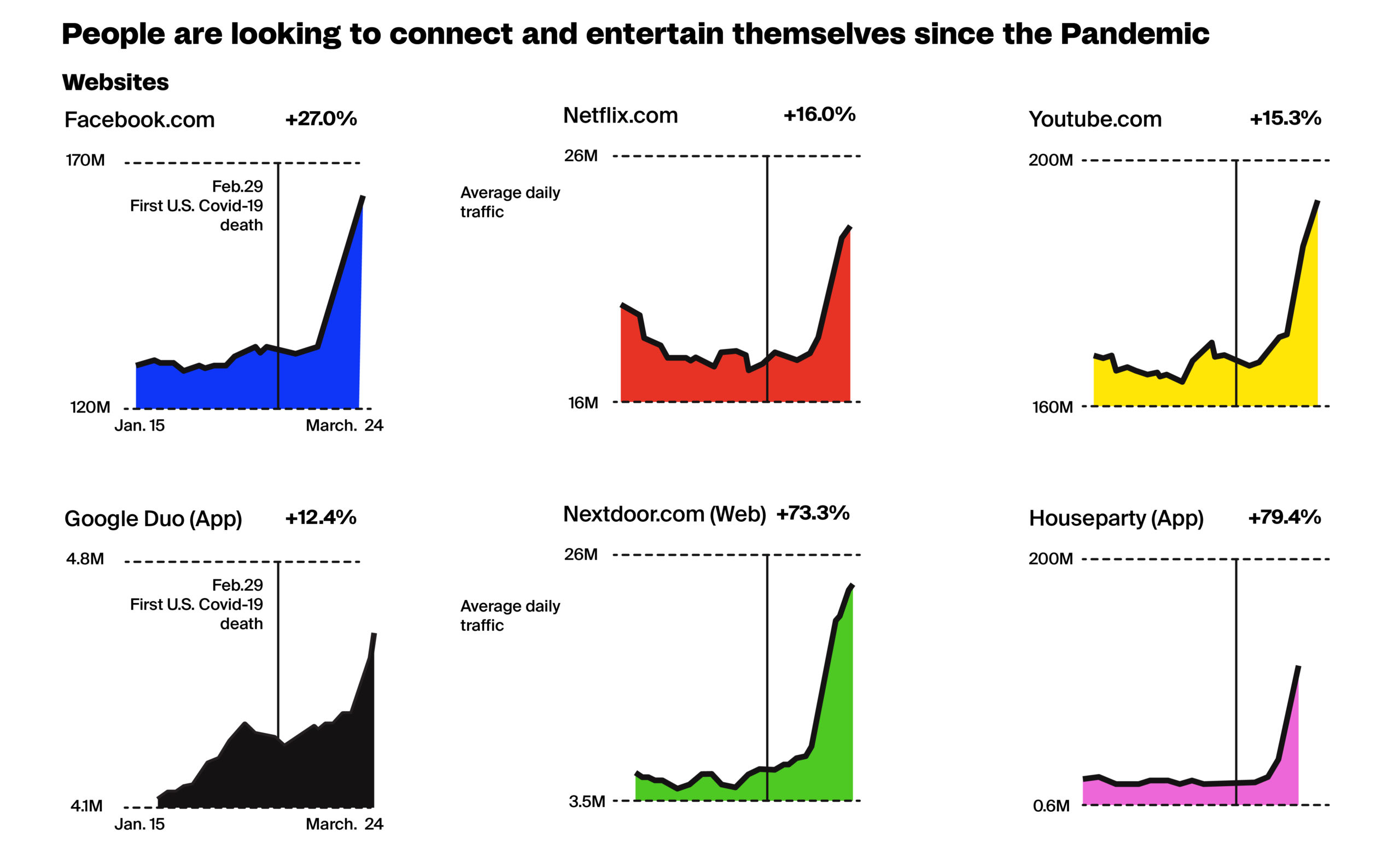
This fundamental shift in consumer behavior also changed the way brands thought about marketing and advertising. Instead of focusing on media placements or reallocating media budgets from channel to channel, the core focus of marketing the strategy became storytelling, brand equity, customer experience, and consumer engagement. Suddenly, it was no longer strategic budget allocation that led to success. Instead, success was based on meaningful experiences, authenticity, consistency, and a sense of belonging that brands sought to foster in their consumers who had spent over a year in quarantine.
Two, there is the larger context of technological advancements that fuel the digital transformation. These technologies include virtual reality (VR) and augmented reality (AR), which have grown in popularity and adoption over the past 4 years. According to Statista, 59.5 million people in the United States used AR at least once a month in 2018. According to projections, this number will reach over 95 million users in 2022.
Number of virtual reality (VR) and augmented reality (AR) users in the United States from 2017 to 2022
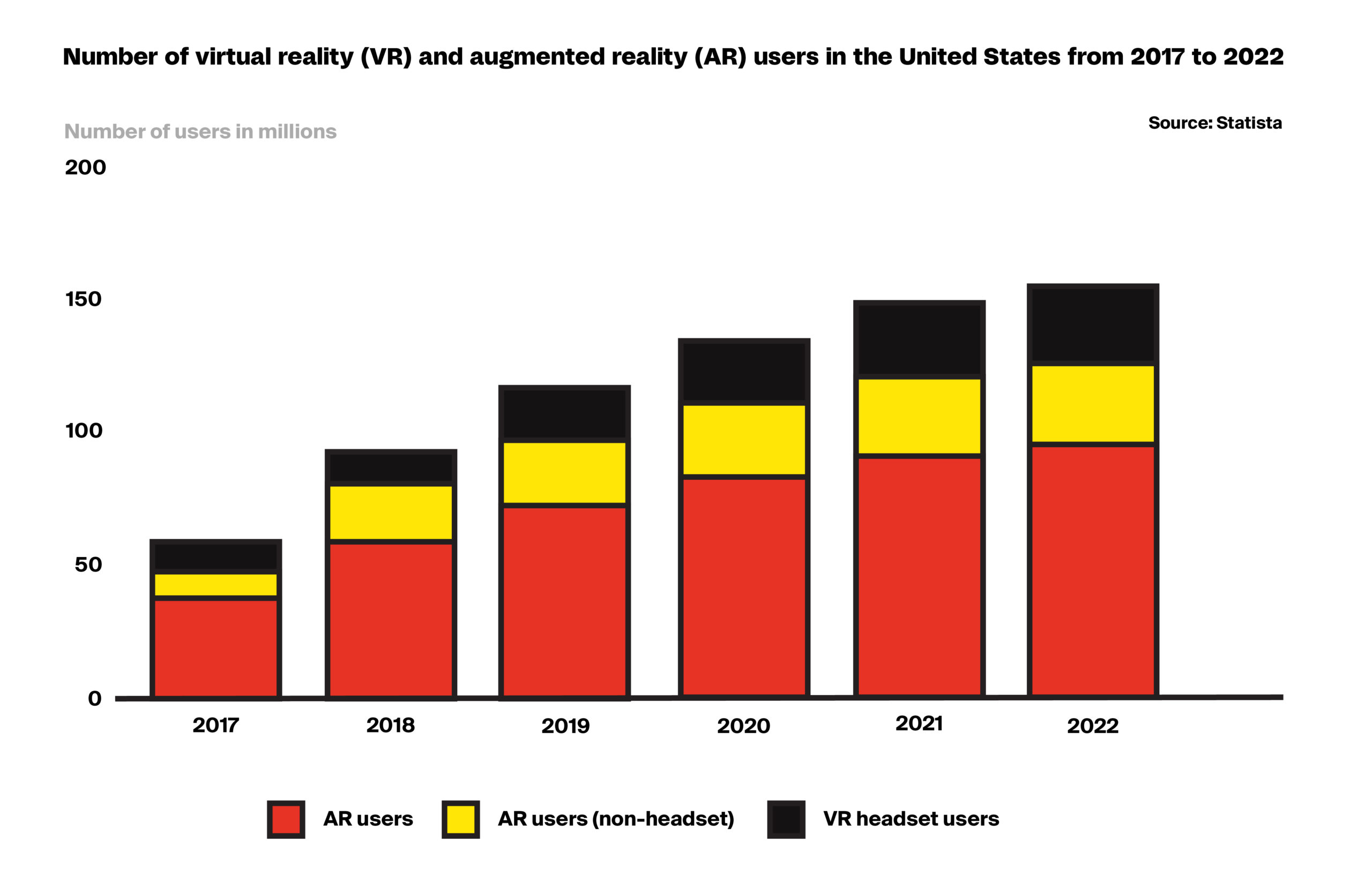
Source: Statista
This is a trend that many tech companies are jumping on — and as it catches on (and changes things), the list of companies investing in the Metaverse is growing fast.
Among other tech giants, Facebook has also expressed its intention to invest around $10 billion in Facebook Reality Labs, its proprietary research group for AR and VR. With the official announcement to rename the company as Meta, it is more than clear that the company is on its way to building its own Metaverse. While Meta already has the hardware to create its own digital world (think Oculus and, more recently, the Ray-Ban smart glasses), it is preparing to create an entirely new digital universe that people can easily plug into with these headsets. Other companies like Amazon, Google, and Microsoft have shown interest in investing further in AR /VR and moving into the Metaverse.
As a marketer, it’s important to stay on top of the latest technology and analyze how it will affect a brand’s market presence. New technologies mean new opportunities for engagement, placements, and activations — and AR /VR is just the beginning of what the Metaverse has to offer in terms of immersion and connection with loyal or potential customers.
It’s interesting to note that for a long time, the traditional marketing approach viewed brand values and communications as an unchanging foundation, leveraging technology for innovative strategies. Now, the scenario has taken a turn: technology has become the foundation that drives a brand’s narrative, providing greater reach, new touchpoints, and more opportunities to engage with customers.
Groundbreaking. But is it?
Even though the word “metaverse” sounds very futuristic, it is more realistic than you think.
The truth is that the hints of the Metaverse have been around for some time, even if they were not as obvious as expected. What this means is that you need to understand and incorporate the Metaverse into your marketing plans in order to become a pioneer, expert, and trailblazer in the space.
Prime examples of the Metaverse existing in our daily world are popular video game platforms like Roblox and Fortnite. These games give users the power to create their own worlds — and already, that power is no longer limited to individual users. It has also extended to brands and companies looking to establish a strong footing in this new, digital realm.
As of early 2021, players spent about 10 billion hours on Roblox, according to the New York Times, and more than 42 million users logged into the gaming platform daily. The games also have their own economy with their own currency — known as Robux — for which players have spent $652 million on digital items for their avatars.
Roblox and Fortnite have both become more than gaming platforms. They grew out of the gaming category when they hosted mass events that brought people together for a shared, digital experience — concerts and shows. For example, Lil Nas X hosted a virtual concert on Roblox in 2020 that drew more than 30 million visitors over 4 weekends. Ariana Grande, in turn, hosted her all-new musical experience — the Rift Tour — on Fortnite.
The same goes for any other video game or social media where users can choose their own avatars and appear through their avatars — they are closer to being “metaversal” than you might think.
The lines between traditional reality and virtual reality are officially blurred. It’s time to understand what that means and how we can prepare for the new world we are entering.
Entering the Metaverse as a Marketer
It’s an understatement to say that the Metaverse will change marketing as we know it. We have already seen many technologies disrupt marketing and advertising – from new platforms to artificial intelligence. But the Metaverse opens a whole new door to limitless possibilities, and it’s our responsibility to venture into the unknown territory and learn how to adapt through rapid experimentation and risk-taking.
The onset of the Metaverse signals the need to move away from traditional marketing and focus on creating authentic, engaging brand experiences that foster strong relationships with consumers. “Growth hacking,” which was the standard for unlocking efficiencies through quick optimizations, will give way to building relationships, accessing established communities, and creating new ones.
Marketing in the Metaverse will be experience-forward and community-driven. At a strategic level, it will be critical to ask yourself why you think consumers want to engage with your brand. Are your experiences interesting and exciting enough? Are they relatable? Are they immersive? And finally, do they have meaning? These are the questions you should be thinking about as you take your first steps in the Metaverse.
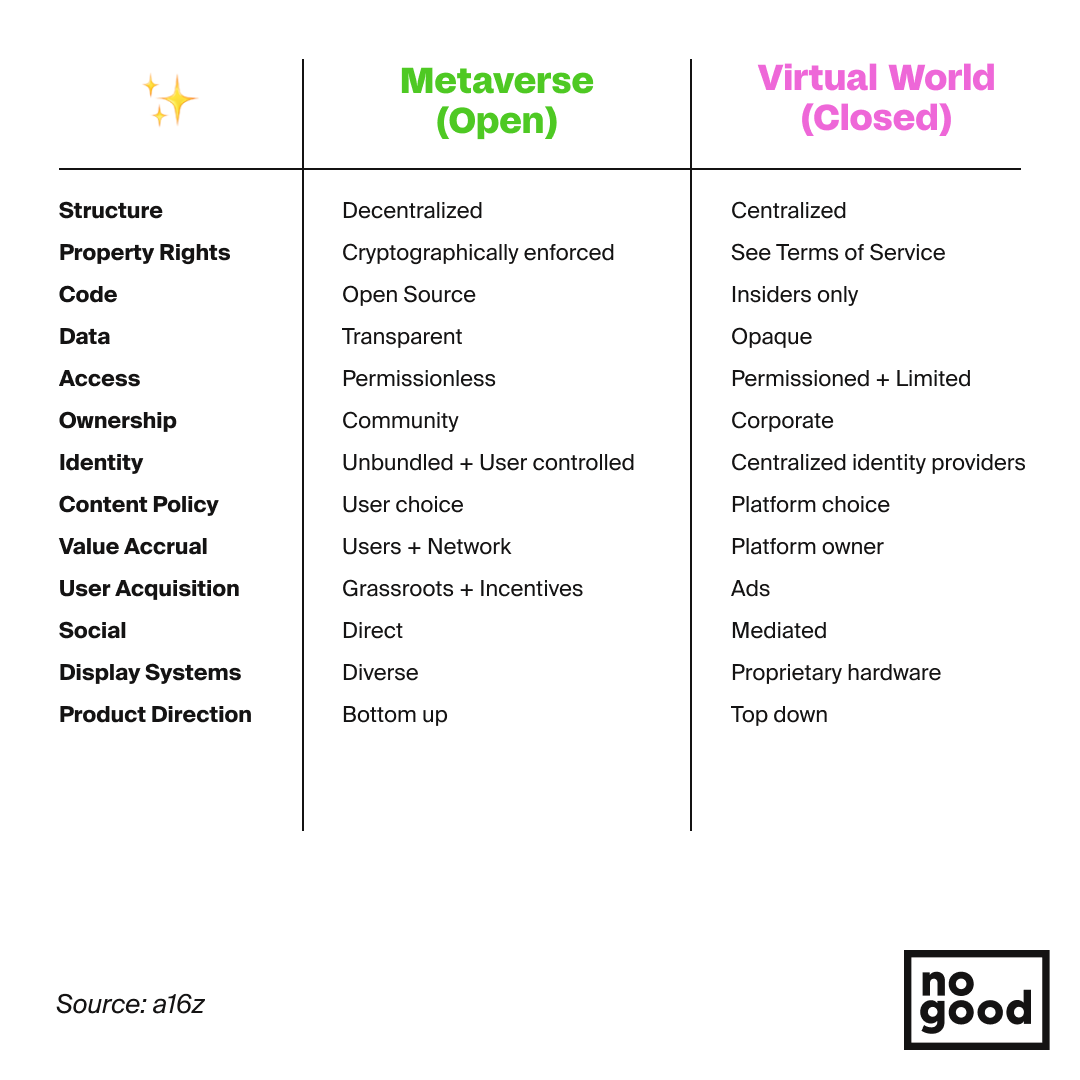
The keyword you should always keep in mind in the Metaverse is community. Brands can grow and scale in this new world by creating their own worlds and engaging with (and contributing to) established and strong communities in the digital world in meaningful ways.
Ownership, Belonging, and NFTs
Over the past year, the acronym NFT has become one of the hottest buzzwords in the tech world. NFTs, which stand for non-fungible tokens, are digital assets similar to bitcoin — but the biggest difference is that they are unique and cannot be replaced or replicated. The real-world equivalent of owning an NFT is owning a rare piece of art or original work, only in the digital world. NFTs come in all forms, from a monetary investment to an item that can be worn digitally.
To date, the most common NFTs have been works by digital artists or well-known artists who create digital-first renderings of their work designed to be distributed digitally. But more and more, brands and industries are recognizing the unique growth opportunities in the NFT space (and by extension, the Metaverse) — and many brands have already launched digital drops and releases to establish themselves in the digital world.
Examples of NFT initiatives range from Hollywood to the fashion industry. Here are just a few of the many NFT releases that have taken place in less than a year:
- Quentin Tarantino announced the release of bonus content from his famous film Pulp Fiction.
- Marvel launched NFTs in early 2021 in anticipation of the latest Spider-Man premiere.
- From Thanksgiving through the end of 2021, NFL fans can get virtual commemorative tickets as NFTs.
- Simone Biles has partnered with Autograph to launch new NFTs — 8-bit animations of her most iconic Olympic moves.
The list is just the tip of the iceberg — but the common thread between all of the above (and future) releases is the same: NFTs are a powerful strategic element for brand growth when used correctly.
NFTs are central to the Metaverse because they a) give customers a sense of ownership and thus belonging and b) allow brands to take community-building to the next level.
NFTs open many doors for brands to deepen their authority and unique story through digital collectibles. They make it possible to generate buzz around certain events or product launches by providing early access to tokens and building anticipation — not unlike the “drops” that are so popular in the real world today. NFTs also offer the unique opportunity to complement an offline service, product, or experience with a digital asset. This allows brands to diversify their revenue streams and increase the reach of an initiative many times over.
The culture of affinity through collectibles is nothing new. It is based on the timeless foundation of scarcity, which makes a product or service all the more desirable. In the past, it was common to collect rare branded items, from shoes to magazine issues to toys. The challenge has always been to replicate this model in the digital world.
The introduction of NFTs has finally made the impossible possible — it has introduced an experience that can certify digital collectibles and is fundamentally built on authenticity, trust, and, of course, affinity. Plus, when NFTs are linked to real offline offerings, they open up new possibilities for engaging, exciting, and immersive experiences that create a deeper connection with the consumer.
AR and VR are no exception to this trend, nor is the Metaverse. To succeed in this new world, a strong brand that brings people together and creates meaningful experiences is a prerequisite for survival and future success.
Brands Charting the Path in the Metaverse
Just as developers and players can create their own worlds in the Metaverse, some brands have also created their own branded worlds to foster a sense of belonging and excitement in the virtual community, whether through experiences or digital collectibles.
In addition to building your own community and building your own virtual world, it’s equally important to engage with communities in meaningful and intentional ways. This means always keeping the pulse on community member trends and hitting them in the right place, at the right time, with the right strategy.
Let’s explore some of the best examples of how brands have prioritized community in their meta-campaigns and initiatives.
Gucci
Gucci was one of the first luxury brands to mint unique NFTs. In collaboration with Christie’s, the fashion house held an online auction of an NFT video called Aria, which was inspired by its Fall/Winter 2021 collection. It sold for $25,000 in June 2021.
In Spring 2021, the luxury fashion brand launched Gucci Garden on Roblox — an immersive virtual exhibit inspired by the Gucci Garden Archetypes, a multi-sensory experience in Florence, Italy.

The virtual exhibit, active for 2 weeks, included a randomized series of themed rooms inspired by the brand’s historical campaigns, design heritage, and past muses. Viewers’ avatars transformed as they made their way through the experience, taking on new colors, patterns, and special effects. The exhibit also featured a boutique with limited-edition virtual Gucci items for sale, designed by RookVanguard.
A luxury brand often perceived as out of reach, Gucci tapped into the Metaverse to build a more community-centric world that became a new touchpoint for consumers from around the world to connect with the brand. The virtual experience — and the world Gucci created — is based on the principles of engaging and fostering a sense of belonging within the virtual community.
Nike
Another brand that is often at the forefront of innovation is Nike — and it’s no surprise that the sportswear brand has already created its own world in the Roblox Metaverse.
Meet NIKELAND, Nike’s own world with the backdrop of its global headquarters and within the immersive 3D space of Roblox. The brand’s goal is clear: “to turn sport and play into a lifestyle.”
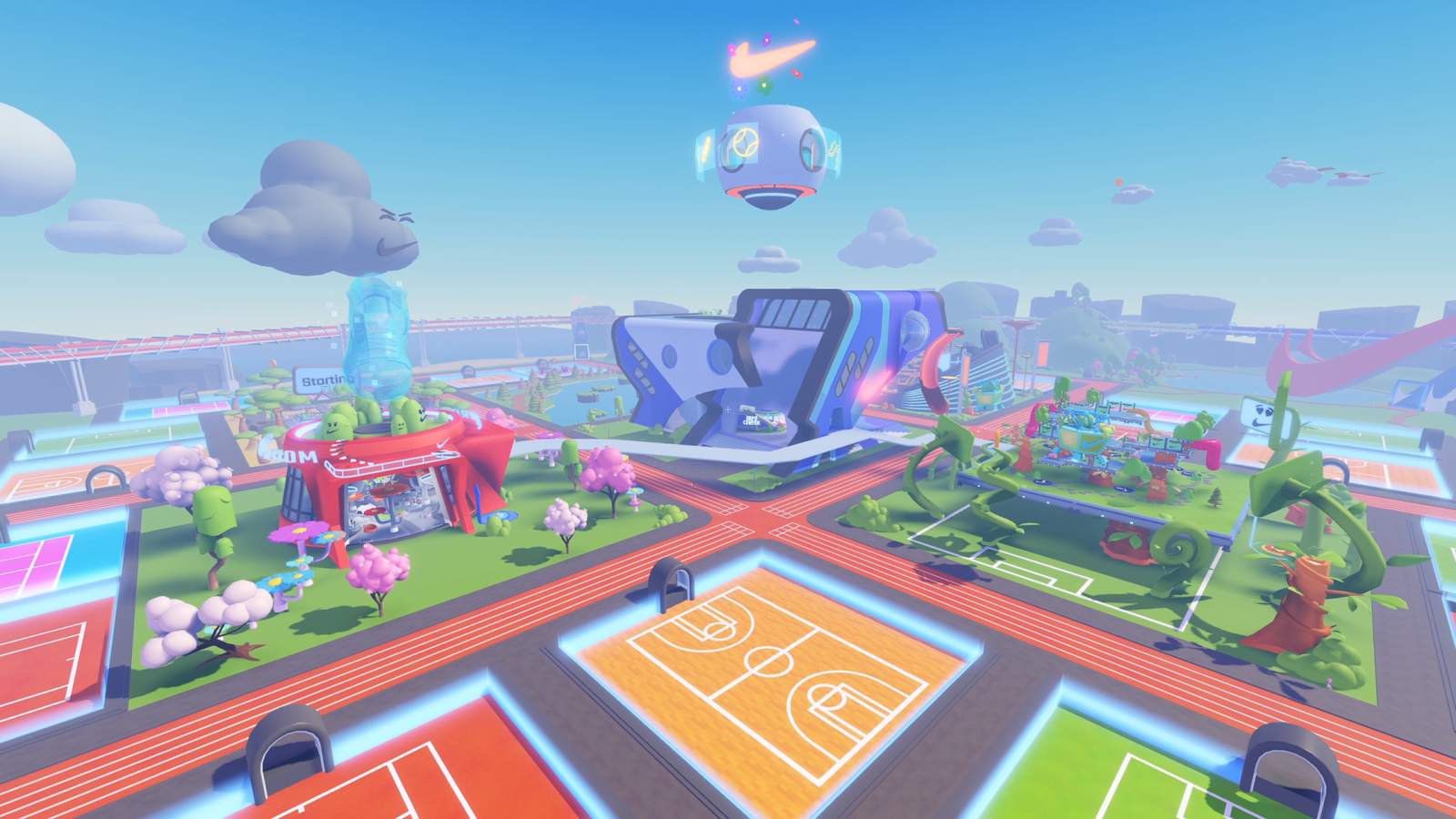
NIKELAND is modeled after Nike’s real-world headquarters and offers the Roblox community the tools to create mini-games with interactive sports materials within the virtual space or participate with their friends in games like Tag, the Floor is Lava, and Dodgeball.
But the real meta quality of NIKELAND is the fact that it spans the real and virtual worlds: The activities that players participate in are not just virtual. They can even transfer offline movements from wearable devices — like jumps or sprints — into the virtual arenas.
Of course, the Nike universe has its own showroom, where players can dress their avatars in new clothes, but also in classics like the Air Force 1 or the Nike Blazer.
NIKELAND is one of the most successful examples to date of how a brand builds its own world while simultaneously engaging the user in two realities — from offline to online.
Coca-Cola
The Metaverse holds an especially unique value to legacy brands because it offers an entirely new way to relaunch the brand in a digital environment, refreshing customers’ memories of the brand’s history and core values while continuing to monetize on the brand’s existing offerings.
And that’s exactly what Coca-Cola has done.
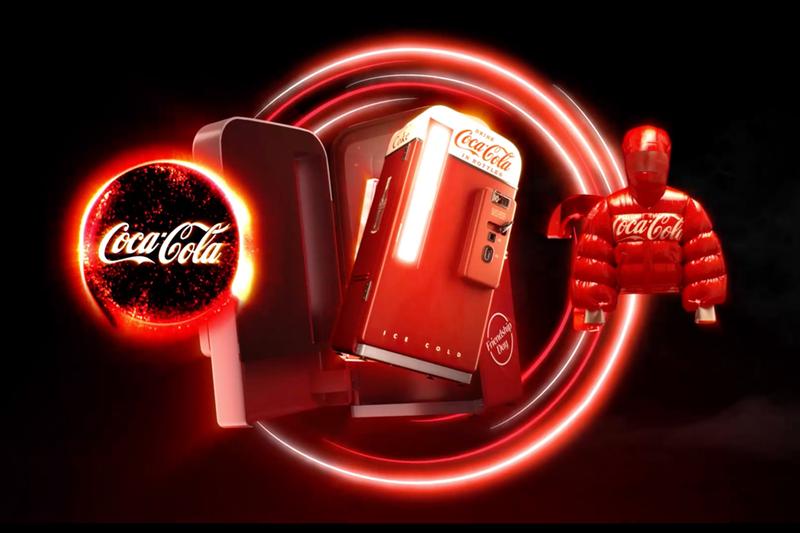
The beverage giant brought back the pixelated version of its classic 1956 vending machine. But this time, rather than holding cans of soda, the “Friendship Box” was designed to be like a video game “loot box.” Inside the loot box, there were 3 additional multi-sensory NFTs: a custom Coca-Cola bubble jacket designed for the Decentraland 3D platform, a sound visualizer featuring recognizable audio clips as you sip or pour the drink, and a Coca-Cola Friendship Card with revamped artwork from the 1940s.
Oh, and the winner of the auction also received a real cooler filled with Coke. Talk about bridging the real and virtual worlds.
In many ways, the activation is a reiteration of the brand’s core values and distinctive identity. Coca-Cola’s ethos has always been about bringing people together and delighting them — and it’s only fitting that their first NFT is a ‘Surprise and Delight’ friendship box, released on International Friendship Day.
And the best part? The digital memorabilia can be enjoyed over and over again thanks to their interactivity.
Balenciaga
Balenciaga is another luxury brand venturing into the new grounds of the Metaverse in partnership with Epic Games, the developers of Fortnite.
The collaboration was announced in September 2021 and brings the luxury fashion house’s signature designs to the game. The overall experience spans the real and digital worlds, with garments existing both in-game and offline. Players can dress up some of the game’s iconic characters with Balenciaga gear from the brand’s previous collections (from hoodies to sunglasses to boots). It’s important to note that the partnership with Balenciaga is Epic Games’ first push into the world of fashion and luxury.
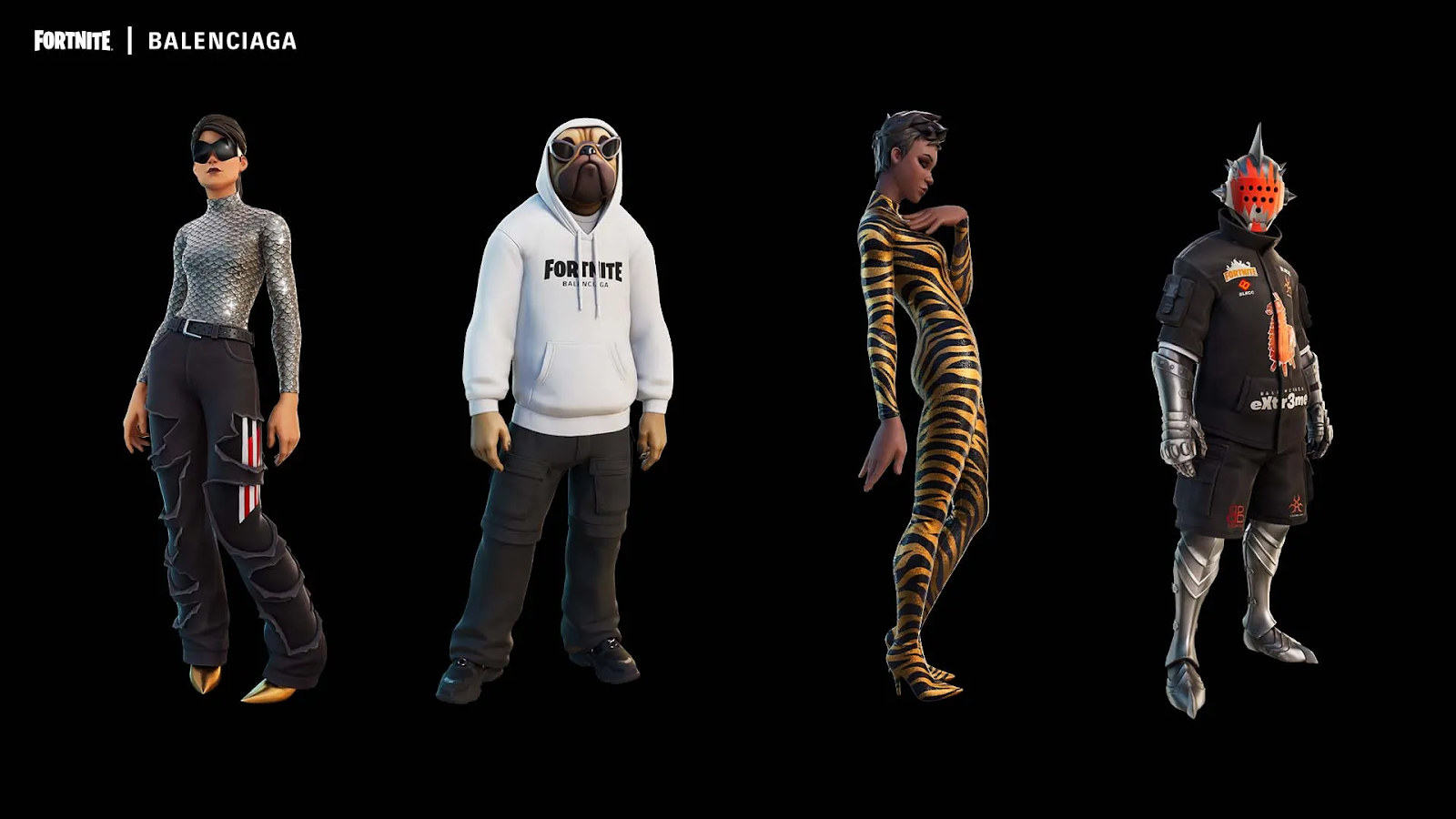
The scope of the partnership included four virtual outfits (or “skins”) that players could purchase, as well as other items such as accessories, weapons, and even a unique in-game virtual Balenciaga destination (complete with a Balenciaga store). Offline elements of the activation included limited-edition Balenciaga x Fortnite hats, t-shirts, and hoodies, all available on Balenciaga.com.
Back in December 2020, Balenciaga unveiled its Fall 2021 collection in the form of its own game called Afterworld: the Age of Tomorrow. Players are immersed in a dystopian, futuristic world and pass avatars dressed in elements of the brand’s collection — from ripped jeans to armour-like boots.
Balenciaga was one of the first to tap into the Fortnite community to create a world where players can use Balenciaga’s design elements to create their own designs and dress their avatars.
NASCAR
The company has just launched its new digital race car, which takes to the virtual streets of Jailbreak, a popular virtual experience on Roblox. Not only has NASCAR seamlessly integrated itself into the Jailbreak universe with a virtual rendition of its cars, but it has also made initial efforts to build community by selling digital apparel for players’ avatars. The company even went so far as to empower the players to design their own custom uniforms and tapped into the game’s developers as influencers to promote the brand through social media channels.
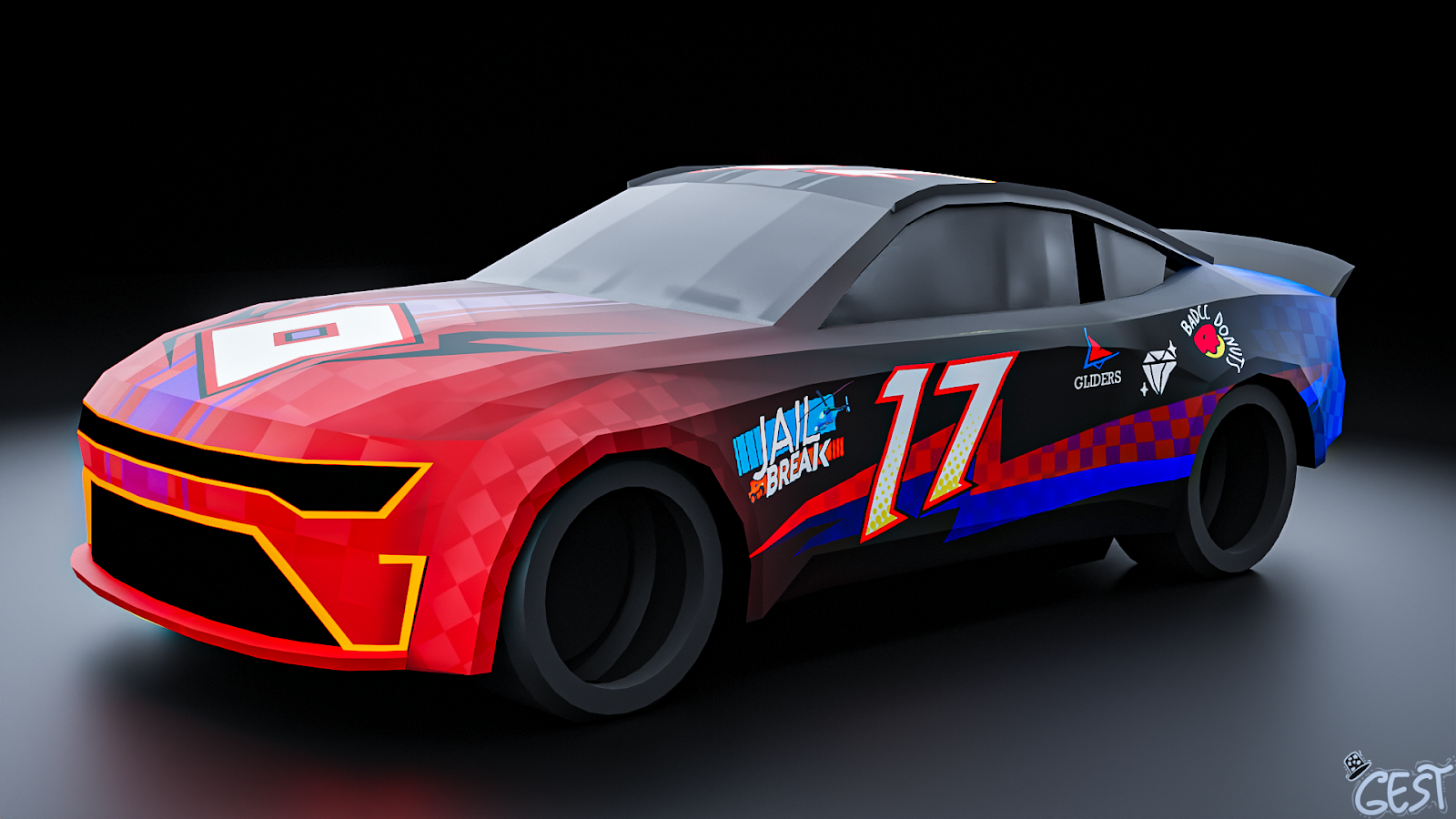
Is the experience immersive? By all means. Is NASCAR giving the users a chance to connect with the brand personally and deeply, to feel like they belong in a community? By all means. NASCAR’s initiative is one of the first examples of a brand-forward and community-driven strategy.
Chipotle
It’s not just luxury brands that are making their first strides into the metaverse. Some of the more well-known food chains are thinking about, too — and Chipotle is already taking action to make it a reality.
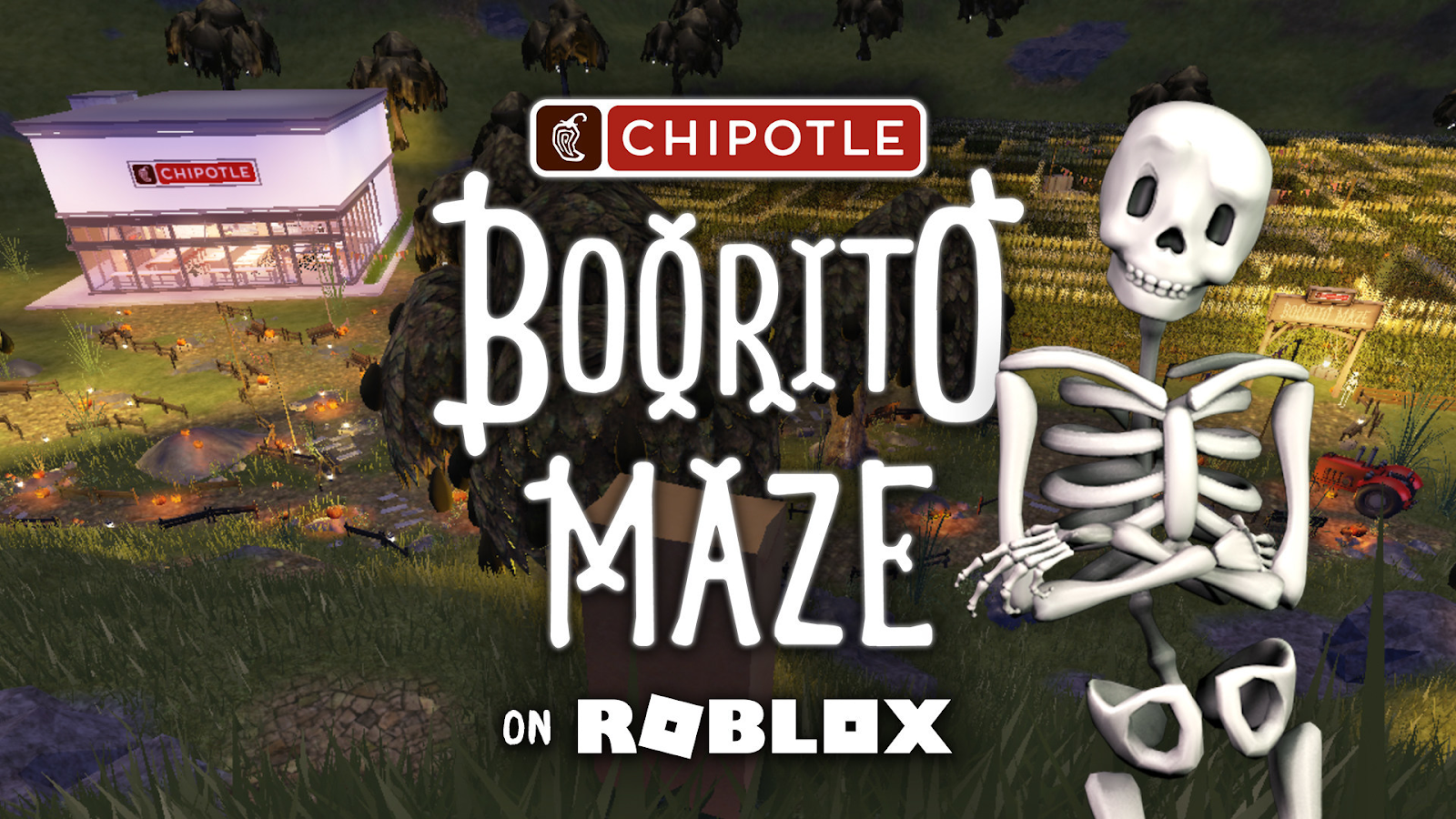
In October 2021, Chipotle announced it would celebrate 21 years of Boorito, a popular Halloween event, by opening the first-ever virtual restaurant on Roblox. Historically, Boorito has brought Chipotle fans together in Halloween costumes at various restaurant locations since 2000.
This year, Chipotle’s digital experience allowed users to virtually visit the restaurant for a chance to win an offer code for a free burrito, navigate the Chipotle Boorito Maze to discover exclusive virtual items, and even select digital Chipotle-inspired costumes for their restaurant visit.
Warner Bros.
The Matrix was one of the first iterations of a world at the intersection of the real and the digital. In 2021 and with the premiere of the latest film, Warner Bros. has introduced 100,000 NFTs for fans of the franchise. The NFTs represent the characters that live and breathe in the Matrix. Each NFT is valued at $50 and allows the owner to choose the red pill or the blue pill, just like the characters in the original films.

These NFTs epitomize the possibilities offered by the Metaverse and crypto. They introduce a unique digital experience inspired by and built upon an existing film franchise. At the same time, they offer a brand new format for fan engagement and community-building in both the online and offline worlds. The interactive NFTs can be constantly updated, giving fans more ways to stay in touch with their favorite films in both realities.
However, this is not the first time Warner Bros. has entered the NFT and Metaverse space. In early 2021, with the revival of the Space Jam franchise, the production company kicked off the initiative with a free promotion giving away NFTs to Space Jam fans.
Meta is the Way (And It’s Here to Stay)
The Metaverse is no longer a myth or a product of fiction. It’s already here — and many brands are eager to dip their toes into the new, digital reality. As we move into 2022 and beyond, every brand needs to develop strategies for growth that leverage the enormous potential of the Metaverse.
To successfully launch into a world where the lines between the real and digital worlds are increasingly blurred, brands must focus on creating experiences that foster community. The ultimate goal is to engage consumers on a new and deeper level and extend existing offerings to introduce NFTs that create anticipation and a sense of belonging among consumers.
The transition to a digital world can be difficult to grasp. But by tapping into virtual communities, or bringing more people into the digital space, you can forge entirely new ways to build customer relationships, establish a strong brand presence, and discover new avenues for monetization.






